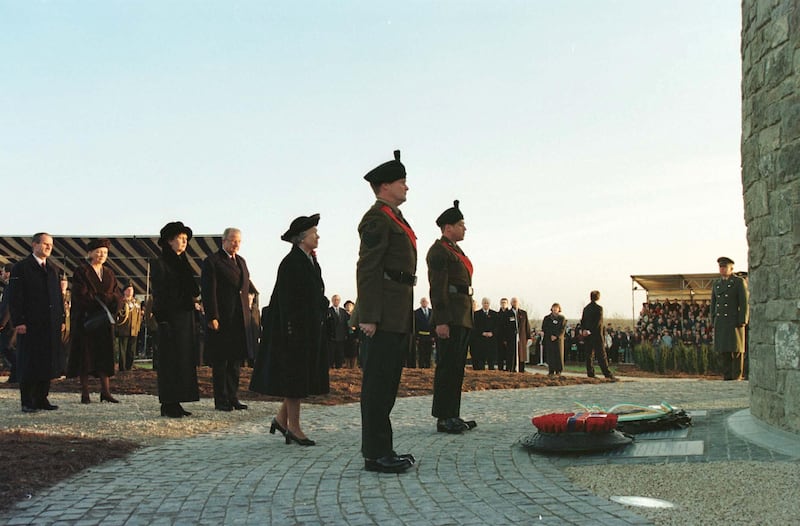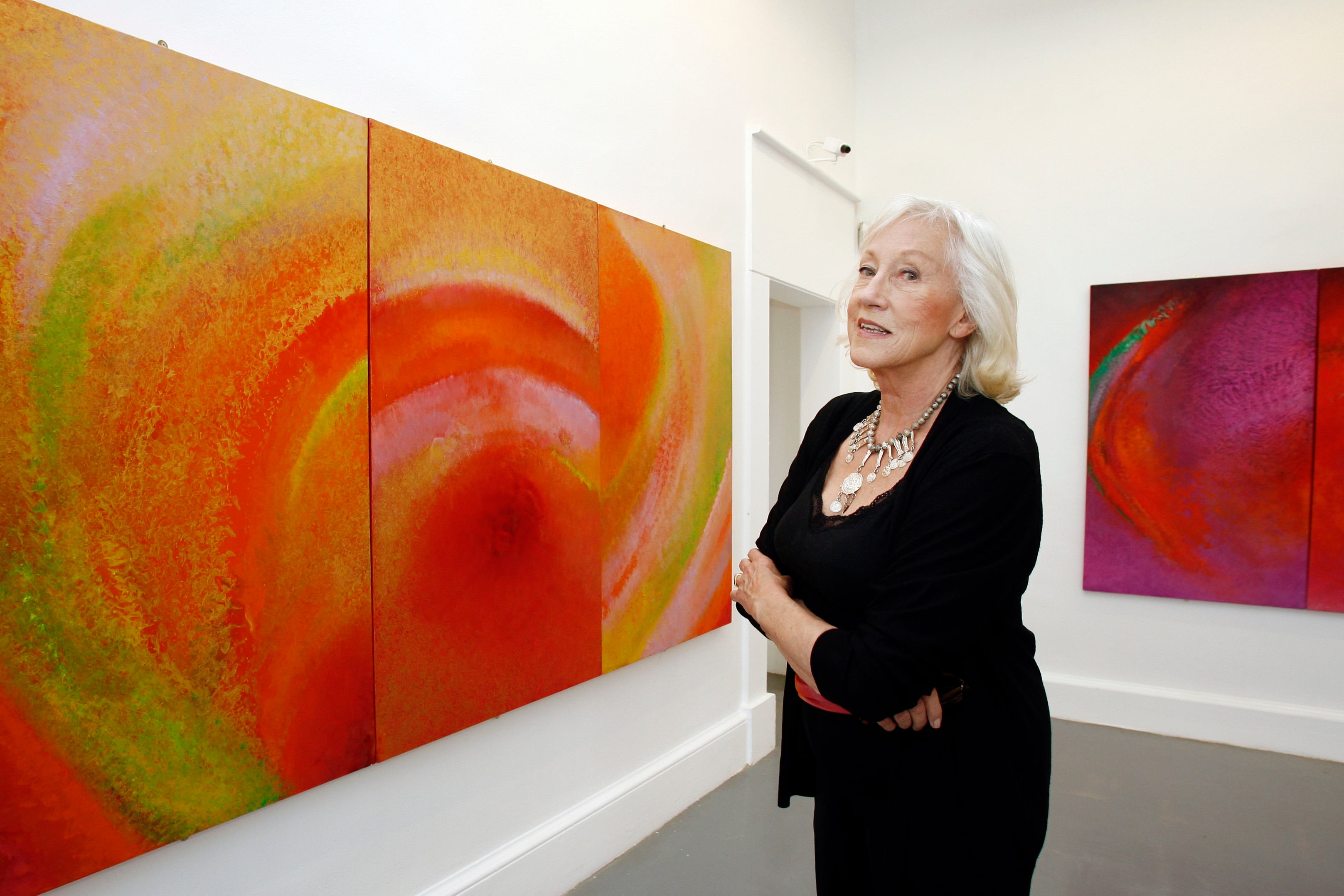On the morning of November 11th 1998, 80 years to the day after the Armistice was signed, three heads of state travelled to the Belgian village of Messines, known today by its Flemish name Mesen. Locals had hung out the Belgian, British and Irish flags from lamp posts and balcony windows.
In one car, the talk between Queen Elizabeth II and President of Ireland Mary McAleese ranged from the difference between shinty and hurling to the Belfast Agreement, then less than six months old. This was also the first anniversary of Mrs McAleese’s inauguration as Irish president.
Their destination on this morning was a new memorial ground to be known as the Island of Ireland Peace Park.
As the convoy of cars drew closer, through a gathering crowd, the park’s centrepiece, its round tower, came into view. The guests of honour fell silent.
READ MORE
McAleese remembered years later: “Our first sight of the tower produced a reverential silence, a realisation that in this place sharp shards of bitter memory were about to be reconciled and the narrative of the past would no longer be told in a way that divided the people of today.
“The snippet of a poem from Tom Kettle immortalised in a plaque was haunting, the ‘secret scripture of the poor’. Best of all was the solemn solidarity of the very mixed audience representing so many diverse and argument-prone elements of Irish and British life, united in respect for the Irish who died in British uniform. You could feel a rubicon was being crossed.”
The Island of Ireland Peace Park remains one of the most visible memorials on the Western Front to those who fought and died in the first World War.
It was unveiled by president McAleese in the presence of Queen Elizabeth and the Belgian king along with thousands of other guests.

A rubicon had certainly been crossed in remembrance of the Irish who died in the first World War. Some 270,000 served, the large majority in the British armed services. The best estimate for the dead from the 26 counties alone is the 31,380 compiled by the historian Tom Burnell in his 15 volume series 26 County Casualties of the Great War indicating a figure of 45,000 dead for the island of Ireland. They are, as the plaque in the Island of Ireland Peace Park states, “shocking uncountable numbers”.
Yet for decades they were the subject of what the historian F X Martin described in 1967 as “the national amnesia”.
Recovering the memory of the Irish war dead was begun by McAleese’s predecessor Mary Robinson who became the first non-Anglican president to attend the annual Remembrance Sunday service in the cathedral which she did in 1991.
The impetus for the Peace Park came from the Fine Gael TD Paddy Harte who visited in the Western Front for the first time in 1996.
He was stunned by what he found: row after row of familiar Irish names, so many and yet they had all been so forgotten. “It seemed to me that the list of Irish names was endless,” he recalled in his 2005 memoir Young Tigers and Mongrel Foxes.
“I was very emotional as I came face to face with the evidence of the slaughter of young men and women in a war that should never have happened. As a Catholic, I had been taught to pray for the dead and here were many thousands killed in a most cruel and savage way and for whom I had never been asked to say a prayer. They had been conveniently forgotten.”
Harte and the former unionist politician and trade unionist Glen Barr came up with the idea of the Island of Ireland Peace Park. The project moved with stunning rapidity. With support from the Irish government of Bertie Ahern and the local authority in Flanders, the park was finished in just two years. Its centrepiece, a round tower which is a replica of the one at Glendalough, was built with stones from the Mullingar Workhouse.
In the years since Flanders has provided a focal point for moments of reconciliation between Britain and Ireland. In 2013 British prime minister David Cameron and then Taoiseach Enda Kenny visited the park and the grave of the former Irish Party MP Major Willie Redmond who was killed nearby in the war. The Duke and Duchess of Cambridge and Kenny were present at the Island of Ireland Peace Park for the centenary of the Battle of Messines Ridge in 2017. The battle, which took place in June 1917, saw men from the mainly nationalist 16th (Irish) Division and the unionist 36th (Ulster) Division fight side by side.
A year previously Martin McGuinness, then the North’s deputy first minister, visited the Island of Ireland Peace Park having declined to attend the opening of it in 1998.
During her visit to Ireland in 2011 Queen Elizabeth visited the National Memorial Gardens in Islandbridge which was built to remember the Irish dead of the first World War. She climbed the steps to lay a poppy wreath at the cenotaph in the middle of the park.
In her speech during President Michael D Higgins’ state visit to the UK three years later, she spoke about the symbolic importance of that visit.
“As our countries enter a period of historical resonance, it is right to look back in remembrance. In Dublin, I laid wreaths in the Garden of Remembrance for those who died in the cause of Irish freedom and at Islandbridge where Ireland’s dead from the first World War are commemorated.
“In August, we will mark solemnly the centenary of Britain’s entry into World War I, calling to mind the terrible toll it took. People from Ireland were involved in all the major campaigns and battles of the war. We will remember and honour their contribution and sacrifice, just as we remember our own.”
Ronan McGreevy is the author of Wherever the Firing Line Extends: Ireland and the Western Front












